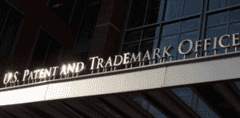米国特許商標庁 動画
![]()
商標審判部の概要
USPTO とテキサス州弁護士会知的財産法部門は、ランハム法成立 75 周年記念の一環として商標ブートキャンプを主催しました。ランハム法
続きを読む“米国特許商標庁 (USPTO) 商標_動画 (embedded/playlist) vol.27”
![]()
商標審判部の概要
USPTO とテキサス州弁護士会知的財産法部門は、ランハム法成立 75 周年記念の一環として商標ブートキャンプを主催しました。ランハム法
続きを読む“米国特許商標庁 (USPTO) 商標_動画 (embedded/playlist) vol.27”
地域団体商標の意外な落とし穴 地域団体商標制度で忘れられている登録上の問題点 特許庁が旗振り役となり、地域団体商標制度(2006年4月1日に導入)が地域振興に一役買ってきたことは確かだと思いますが、同じような商標の保護が …
1.使用主義を支える使用供述書・使用宣誓書 米国特許商標庁では、連邦の商標登録に記載される指定商品・指定役務については”全て使用している”としてその登録情報を維持しており、その商標について使用していない商品や役務を登録し …
ICYMI, a new Trademark Manual of Examining Procedure (TMEP) was released by the United States Patent and Trademark Office (USPTO) last month. The July 2021 revision replaces and supersedes the October 2018 version, and it incorporates final rules, examination guides, and Supreme Court decisions that have issued since then.
情報源: New USPTO Trademark Manual | Fox Rothschild LLP – JDSupra
Change Summary (INDEX TO CHANGES IN TMEP July 2021)
![]()
On August 4, 2021, the U.S. Department of Commerce filed applications to register several USPTO trademarks. The applications are part of ongoing efforts by the USPTO to combat frauds committed against trademark owners and applicants.
米国特許商標庁は、偽メールなどの撃退のための商標登録を意図して2021年8月に4件の出願をしています。
| 90865893 | |
| 90866054 | |
| 90866020 | |
| 90866032 |
Businesses at home and abroad are becoming more and more aware of the value and benefits of a U.S. trademark registration. Unfortunately, along with the historic surge of new trademark filings over the past year (see our blog on the surge), the USPTO has also seen an increase in suspicious submissions ranging from inaccurate to fraudulent.
情報源: Director’s Forum: A Blog from USPTO’s Leadership
